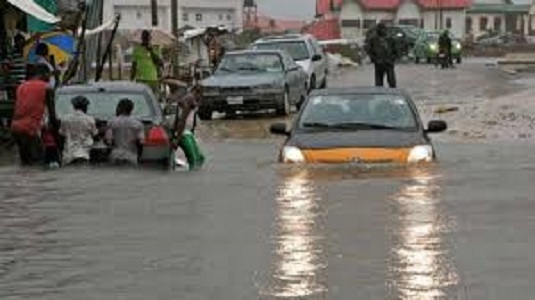Coping with flood: Things Nigerians can learn

By Omotayo Edubi
Flooding is one of the most prevalent and devastating disasters in Nigerian cities.
It happens every year in many states of Nigeria and it has social and economic impacts.
In 2010, approximately 1550 people died and 258,000 displaced by 19 flood events.
In 2012, Nigeria experienced its worst flooding in recent history, it caused two million people homeless and 363 died. The same year, a monetary loss of approximately $6.5 billion in damages were recorded.
The regularity and intensity of flooding in Nigerian cities is attributed to many factors, these include too little drainage system, chaotic physical developments, and blockage of drainage channels by solid waste, population growth and illegal erection of buildings and other structures are causes of this disaster.
A link has also been made between increasing flood incidence and climate change. A combination of these challenges is a recipe for flood disaster in cities.
Attention to these issue is increasing in Nigeria, with a view to reduce vulnerability.
The Sendai Framework is a global framework the United Nations adopted in 2015 to reduce disaster risk.
It emphasizes four ways to minimize the risks of disasters. These are: understanding disaster risk; strengthening disaster risk governance; investing in disaster risk reduction; and enhancing preparedness.
Nigeria has not implemented any of the components of the Sendai Framework.
It is vital for government, non-governmental agencies, community-based organizations and residents to come together to prepare for floods and shrink its impact.
Funding, staff development and technical assistance are particularly important. This will enable and encourage communities to follow effective practices.
Community participation will also strengthen social cohesion and cooperation. It will provide opportunities to integrate disaster management into local development planning processes and systems.
Modern technology, which uses geospatial infrastructure to identify and map out areas prone to flooding, should be embraced. It should inform appropriate action toward disaster preparedness, rescue, and recovery.
This is in line with the United Nations International Strategy on Disaster Reduction concept of living with floods rather than fighting them.
As a result of continuous increase in the built-up surface and growing settlements in low-lying areas, the existing infrastructure in Lagos and Port Harcourt cannot cope with the run-off and water volume it faces.
This leads to frequent, localized flooding. State governments should invest in roads and drainage systems for effective flood risk reduction.
Public information campaigns in the media and through community-based organizations would encourage a culture of flood preparedness, prevention, mitigation, response and recovery.
